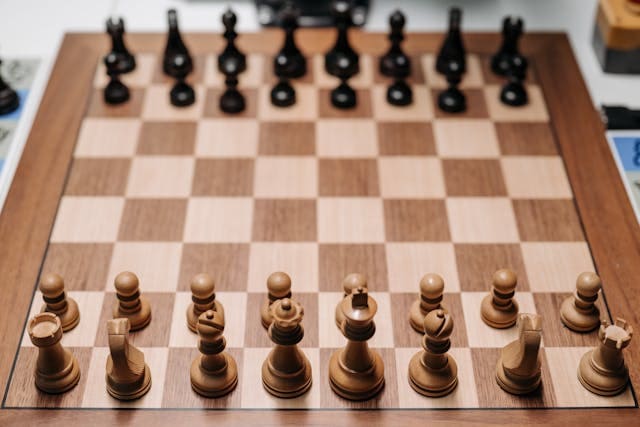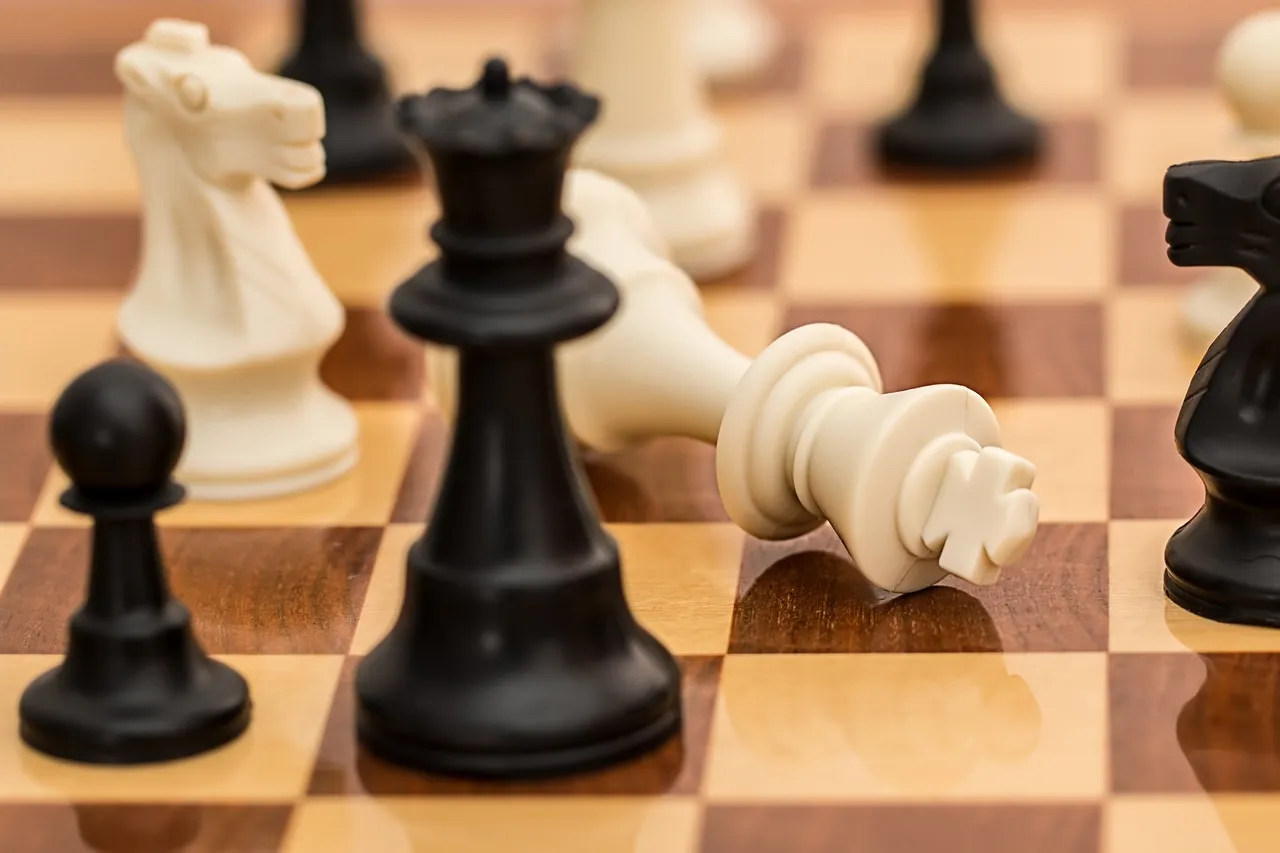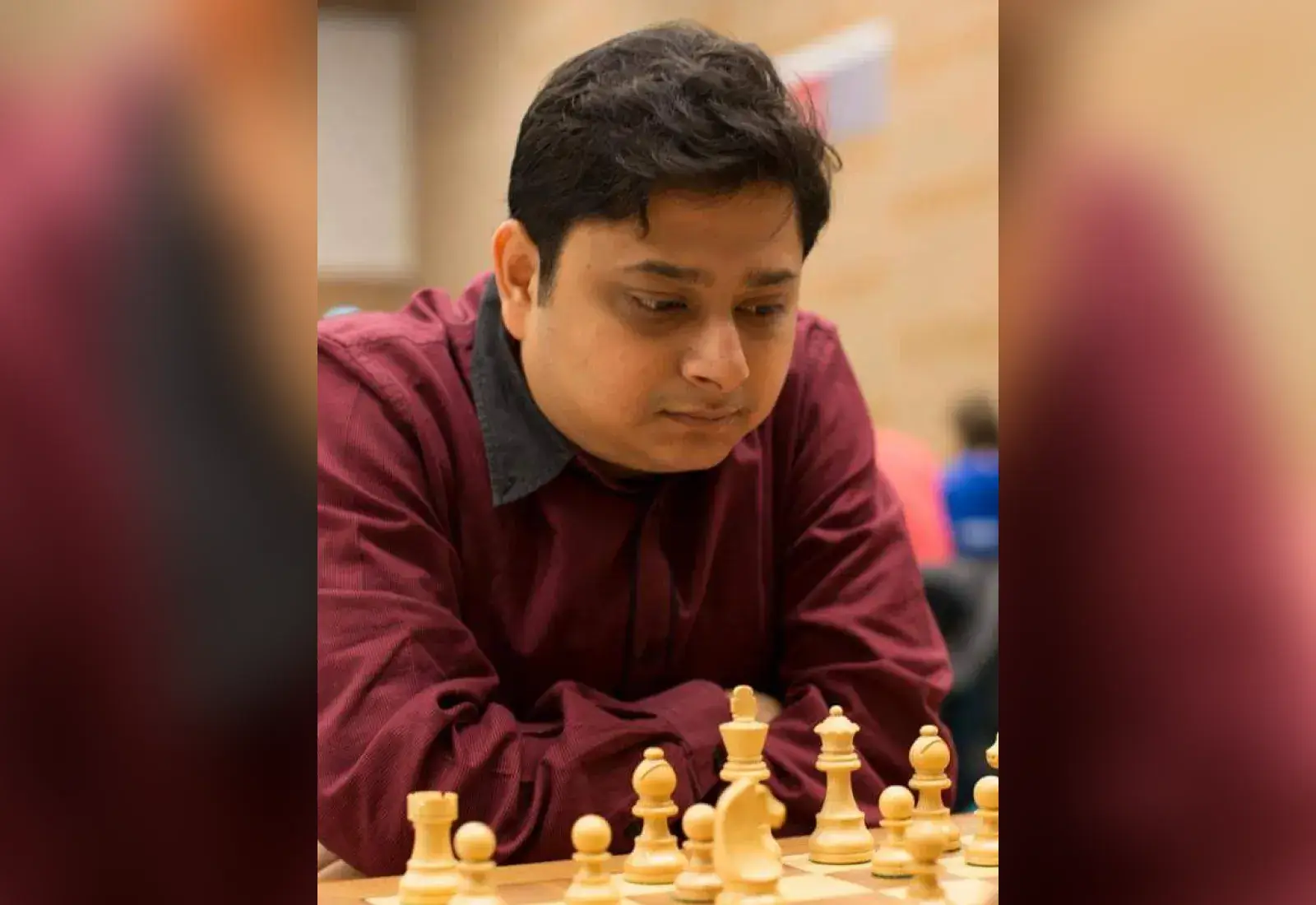How to Set Up a Chess Board
Knowing how to set up a chessboard is the first step for any player who wants to enjoy the game. Chess is a game of strategy, and even small mistakes can change the outcome. Setting up the chess board correctly helps both players start with equal chances. This makes the game fair and helps you think ahead.
Beginners often make simple errors. They might place the queen or king on the wrong square or set the board facing the wrong way. These mistakes can lead to confusion during the game.
In this guide, we will explain the correct way to set up a chessboard. We’ll also show you how to avoid common mistakes, so your game starts smoothly every time.
3 Easy Steps to Set Up a Chess Board
Step 1: Proper Chess Board Orientation
Step 2: Placing the Major Pieces
Step 3: Positioning the Pawns
Step 1: Proper Chess Board Orientation
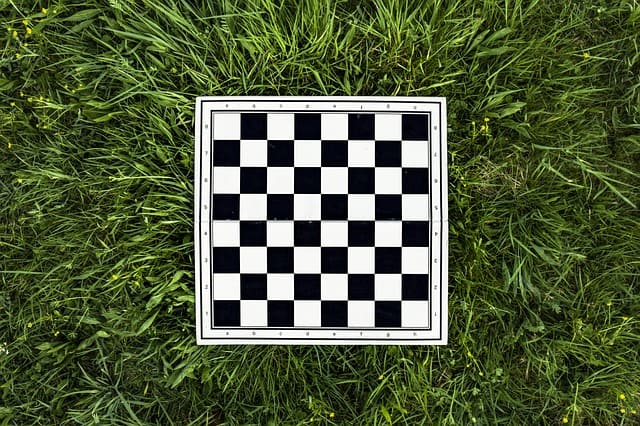
The first step in learning how to set up a chessboard is making sure the board is aligned correctly. This is a simple but crucial step. For both players, the bottom-right corner square must be a light-colored square. If the board is aligned this way, the entire setup will be right, which can lead to clarity during the game.
This orientation matters because chess moves are based on a specific grid system. The files (vertical columns) and ranks (horizontal rows) are labeled based on the way the board is placed. Having the board set up with the light square in the bottom-right corner ensures that the pieces move as they are supposed to, and it keeps the game fair. It also helps both players follow standard strategies correctly, as each piece has its optimal starting position based on this orientation.
Notable Consequences of Wrong Chess Board Orientation
- Misplacement of Pieces:
- Suppose the board is not aligned with the light square in the bottom-right corner. It will lead to the wrong placement of key pieces like the queen and king. This disrupts the standard setup, leading to confusion for both players.
- Confusing Movement Patterns: Chess moves are based on a grid of ranks and files. The players have a fixed set of approaches to open the game. Incorrect orientation disrupts the entire process. It alters the familiar grid system, making it harder for players to follow traditional strategies and opening sequences. Read about Chess Openings.
- Game Imbalance: Misaligned boards can unintentionally favor one player, as pieces won’t be positioned as intended. This creates an uneven start, which could lead to unfair advantages.
- Tactical Errors: Players might misjudge their positioning on an incorrectly set board. The confusion caused by this could lead to poor decision-making during critical moments in the game.
- Notation Issues: In tournaments, chess uses standard notation (algebraic notation) to record moves. An incorrectly placed board makes it impossible to use this notation properly, leading to communication and documentation errors during games.
Taking a moment to align the board properly is an easy way to avoid mistakes and start your game on the right foot.
Step 2: Placing the Major Pieces
Once the chessboard is oriented correctly, it's time to set up the major pieces. These pieces form the back row, known as the back rank, and their proper placement is key to starting the game on the right foot.
Back Rank Setup
Begin by placing the rooks in the corners. These tall pieces move in straight lines—either horizontally along the ranks or vertically along the files. Having the rooks in the corners helps them control the edges of the board, and they become more powerful as the game progresses.
Next, place the knights right next to the rooks. Knights are unique because they move in an "L" shape, jumping over other pieces. Their ability to cover unusual squares makes them tricky opponents in the early and mid-game. Positioning them beside the rooks ensures they can work together to protect the back row and strike when needed.
Following the knights, place the bishops beside them. Bishops move diagonally, which allows them to control the board from their positions near the center. Each bishop is limited to squares of its own color, so one bishop will always remain on the light squares, and the other on the dark squares. Their placement here helps balance the control of both light and dark squares across the board.
King and Queen Placement
The final two pieces to place on the back rank are the king and queen. The queen is always placed on the square that matches her color. So, if you're playing white, the white queen goes on the white square, and if you're playing black, the black queen goes on the black square.
After placing the queen, the king is positioned beside her, on the last remaining square in the back rank. This completes the setup of the major pieces, with the king and queen occupying the center two squares. Placing them correctly ensures that your most powerful pieces are ready to protect your position and launch an attack when the time is right.
Step 3: Positioning the Pawns
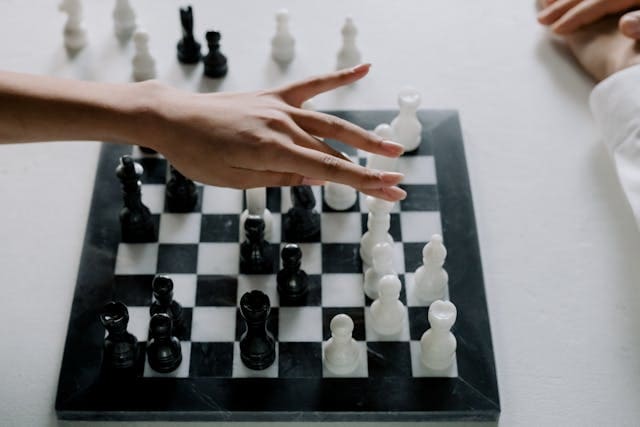
After setting up the major pieces, it's time to place the pawns, which are the first line of defense. All eight pawns for each player go on the second row, or the second rank, directly in front of the major pieces. For white, place the pawns on the second rank (row 2), and for black, place them on the seventh rank (row 7). The pawns are like foot soldiers, protecting the more powerful pieces behind them.
Placing the pawns correctly is important to keep the game organized and fair. Each pawn should be directly in front of a major piece to ensure proper alignment. This creates a solid wall of pawns that are ready to advance and help your game strategy. Ensuring uniformity, with each pawn placed in its correct spot, helps prevent mistakes during the opening moves and sets the foundation for a good defense.
Common Mistakes to Avoid in Chessboard Setup
Misplacing the Queen and King:
One of the most common mistakes beginners make is placing the queen and king on the wrong squares. Many players confuse the positioning, often placing the queen and king incorrectly because they look similar or due to inexperience. A simple rule to remember is that the queen always goes on her own color—meaning the white queen should be placed on the white square, and the black queen on the black square. Once the queen is in the correct position, the king should be placed on the remaining square next to the queen. Misplacing these two powerful pieces can lead to confusion and disrupt your strategic plans.
Incorrect Board Orientation:
Another frequent error is setting the board up with the wrong orientation. If the light-colored square is not in the bottom-right corner for both players, the entire game setup will be incorrect. This misalignment can confuse the players and make following strategies and standard notations difficult. Proper orientation ensures that both players are using the board in a way that aligns with chess conventions. It’s a simple mistake to fix but can have a big impact on the game.
Overlapping or Misaligning Pieces:
Sometimes players don't position their pieces properly within their squares, causing pieces to overlap or misalign. This might seem like a minor issue, but it can make the board look cluttered and disorganized. It's important to place each piece neatly in the center of its square to ensure the board remains tidy and easy to read. A well-organized board helps both players focus on strategy rather than being distracted by misplaced pieces.
Additional Tips for Chess Setup
Double-check Before Starting:
Before you begin playing, it's a good idea to double-check the board to ensure that both sides mirror each other correctly. Each piece on the white side should have its counterpart in the exact same position on the black side. This prevents confusion and ensures a fair and balanced game from the start. Taking a few moments to verify the setup can save you from mistakes later on, especially in competitive or tournament settings where precision is crucial.
Why Precision is Crucial:
Accuracy in setting up the chessboard is important not only for casual games but also in official tournaments. Incorrect setups or misaligned pieces can result in penalties or disqualification in competitive chess. Even in casual play, precision in the setup contributes to a more enjoyable and fair game, ensuring both players are working from the same starting conditions.
Set Up Quickly for Blitz or Rapid Games:
In fast-paced formats like blitz or rapid chess, where time is limited, learning to set up the board quickly is key. In these types of games, every second counts, so players often need to master rapid setup techniques. A good tip is to organize the pieces off the board in advance, then place them swiftly in the correct positions when it's time to play. Efficient setup helps ensure you have more time to focus on your game and less time worrying about getting the pieces in place.
In Essence: Understanding Chessboard Setup
Setting up the chessboard correctly is the first step toward a fair and exciting game. Whether you’re playing casually with friends or gearing up for a tournament, knowing how to set up a chess board is crucial. By placing each piece in its proper position, you not only ensure the game starts off on the right foot but also set the stage for smooth, strategic gameplay.
Practice makes perfect, so don’t be afraid to take the time to practice setting up the board until it becomes second nature. Over time, you’ll notice how a well-organized board contributes to the flow of the game, making every move more enjoyable and focused. With the right setup, you’ll be ready to take on any opponent, whether it's a casual weekend match or a fast-paced blitz game.
So, the next time you play, double-check your setup, stay focused, and enjoy the beauty of a well-played game!
If you want to get these basic tactics clear, first you have to learn from an expert chess player and teacher. You can also explore online chess classes to get connected with the best teachers from anywhere in the world.


